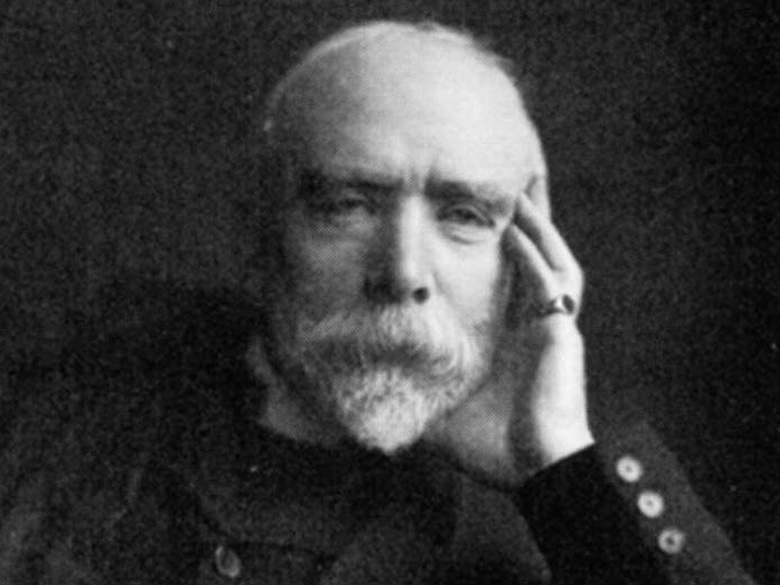Rev. Gerald Stanley Davies
A man of many and varied interests, of discriminating tastes, and a wide knowledge of art, natural science and archaeology.
Born in 1845, Gerald Davies was the youngest son of Admiral George Davies. From an early age he became familiar with Newmarket and the stables there. This began a lifelong love of horse racing and it is said that he never missed a Derby! Gerald found time to paint, learn ironwork, silver-smithing, clay sculpting and etching. He was also a keen archaeologist, architect and antiquarian.
Davies and Charterhouse School
Gerald joined Charterhouse School aged nine as a Foundation Scholar and went on to study at Christ College, Cambridge. Thereafter, he was ordained and served two or three curacies. In 1873, soon after Charterhouse School was relocated from its London home to Godalming, Gerald returned as a Form Master. In 1909, he left Charterhouse in Godalming to become Master of the Charterhouse, London.
Davies the Collector
Whilst teaching at Charterhouse School, Gerald Davies used his long summer holidays to create a 'collection of curiosities' by travelling widely across Europe and gathering examples of traditional peasant craft. His collecting was inspired by a fishing trip to Norway in 1885 where he acquired the most 'extraordinarily beautiful designs that he had ever come across anywhere'. Gerald believed that the artefacts he collected represented a more traditional and idealised way of life, free from the taint of modern living. He saw this peasant craft vanishing from Europe and hoped that his collection would help to preserve it.
Gerald collected artefacts from Sweden, Norway, Lapland, Iceland, Holland, Northern Russia and the countries around the Baltic. His collection consisted of mainly household objects including woodwork, metalwork and textiles. When choosing items to add to his collection his guiding principal was to obtain work made by the peasants themselves 'for their own use and not for sale'. Gerald defined Peasant Art as:
A man of many and varied interests, of discriminating tastes, and a wide knowledge of art, natural science and archaeology.
Also included in his collection were items intended to be family records, inscribed with family names, or items to be passed down through a family as betrothal gifts. Gerald considered that the peasant artists always struck an exact balance between use and adornment; artefacts were always decorated in the right places so that such decoration did not interfere with the items' efficiency but then had an artistic appeal once its utilitarian purpose had temporarily ceased.
Davies the Writer
Gerald Davies wrote several books on art dealing with Hans Holbein, Franz Hals, Domenico Ghirlandaio and Michelangelo. He also wrote a pamphlet on the Peasant Handicraft Museum.
Davies's Peasant Arts Collection
When Gerald became Master of the Charterhouse, London, he decided he could not take his collection of peasant craft with him. He agreed to sell it to Dr Greville MacDonald (1856-1944), writer, and treasurer of the Peasant Arts Society, who offered to buy it on behalf of the Peasant Handicraft Museum at a price far below its real value.
